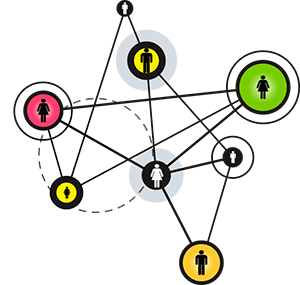
By: Jeremi Karnell, CEO
“Graphs”, from a marketing and communications standpoint, seem to be everywhere these days.
Facebook has introduced us to Open Graph and Graph Search as a way to better leverage social graph data. Twitter just announced the ability to target keywords in timelines and introduced human-aided search results to deliver more precise interest graph data. Not to be outdone, LinkedIn updated its search engine, further solidifying its aim to evolve a Professional/Career Graph by digitally mapping the global economy (consolidating human resources, individual skills and detailed corporate information). Finally, Google has announced its Knowledge Graph advanced search algorithm, which pulls data from YouTube, Google Images, Google Maps, Google News, G+, Wikipedia and various blog platforms to deliver more meaningful search results.
Why this uptick in graph related conversations and products? Before we answer that question, it probably makes sense to define what a graph is. Wikipedia offers the following definition: “A Graph is a representation of a set of objects where some pairs of the objects are connected by links.”
Simply put, a graph is just another word for a network.
Social Graphs represent networks based on shared personal connections (i.e., friendships).
Interest Graphs represent networks based on shared interests, regardless of personal connection (i.e., professions, hobbies, brands, music, movies, etc.).
Location Graphs show the individual location pattern of someone and how he or she is connected to those places.
Content Graphs are mappings of content exchanges that are now possible in a networked world.
And so on….
Graphs are everywhere and for good reason! We live in a world that is rapidly connecting everyone to everything…everywhere.
And now, Graph Marketing (fueled by Big Data) is becoming the new Operating System for major social and search platforms. Brands would be wise to make it a priority to understand this trend and begin to re-evaluate/adjust their marketing strategies to take full advantage of how their many graphs (social, interest, economic, knowledge, location, content, etc.) may be leveraged to drive sales, reduce cost and enhance customer/partner relationships.
Contact Us Today to learn how Graph Marketing can help your business engage your customers in meaningful ways that produce real results.






Pingback: Leading Graph Platforms (Infographic) | Beehaus
Pingback: Graph Marketing: 4 Recommendations for Today’s CMO | Beehaus
Pingback: Measuring Influence in Social Graphs (Infographic) - Beehaus - Beehaus
Pingback: Favorite Taste Graph Platforms - beehaus - Beehaus